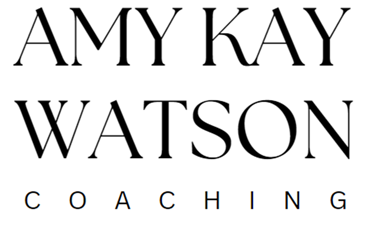Listen as a Podcast
Conflicts happen. Even in high-performing teams, misunderstandings, offenses, or broken trust can interrupt collaboration. As a manager, how you respond in these moments can either divide your team further—or lay the foundation for a stronger, more resilient culture.
What steps can managers take to rebuild trust after conflict?
Here’s a 5-step method to help team members move forward together after harm has been done. It’s designed to be human-centered and accountability-focused—without formal disciplinary language or finger-pointing.
🔍 Step 1: Clarify What Happened
Start with individual check-ins. Meet privately with each person involved. Your goal here isn’t to gather evidence—it’s to understand the human story behind the conflict.
Use open, neutral questions like:
- What happened from your point of view?
- How has this affected you or your work?
- What do you wish had gone differently?
Listen without interrupting or correcting. Take notes on both facts and emotions—both will be important later.
Let each person know that these conversations are part of a larger process to repair trust and improve team dynamics. That transparency builds trust and lowers defensiveness from the start.
🧭 Step 2: Explore the Impact
Bring the involved team members together—but only after everyone feels grounded and ready. You’ll know they’re ready when you hear calm, reflective language and a willingness to engage rather than vent or avoid.
You can help people get there by checking in privately, giving them time to process, and sharing what to expect. Remind them that the goal is understanding, not judgment.
When the group meets, begin by naming your own experience of the conflict:
🗣 “This tension has been affecting the team—and I’ve felt it too. I want us to rebuild trust and move forward together.”
This helps the team see that you’re not above the situation—you’re in it with them.
Then invite each person to share the impact in their own words:
- What was the effect on your ability to do your job?
- How did this affect your trust or confidence?
- What do you need in order to feel safe or supported again?
Stay focused on impact, not intention. The goal is to create space for clarity and connection—not correction.
🤝 Step 3: Invite Ownership
Encourage each person to take responsibility for the part they played. This isn’t about shame—it’s about maturity, integrity, and care for the team.
Start by setting the frame:
🗣 “This isn’t about assigning blame. It’s about understanding how we each contributed—so we can rebuild trust and work better together going forward.”
This framing matters. It reminds everyone that conflict is rarely one-sided and that healthy teams grow through honest reflection. When people see that ownership is shared, not one-sided, they’re less likely to shut down or get defensive. You’re modeling a team mindset, not a courtroom dynamic.
If someone is hesitant to engage, help them ease in. Offer gentle prompts like:
- Looking back, what might you do differently next time?
- Is there anything you wish you’d handled in a different way?
- What do you think your teammate needed that they didn’t get?
Your tone and presence matter. Stay curious, supportive, and calm. When people feel safe, they’re more likely to take meaningful responsibility—and that’s what sets the stage for repair.
🛠 Step 4: Co-Create a Path Forward
Support the team in deciding together what will restore trust and rebuild working relationships. The key here is collaboration—don’t impose a solution. Invite the team to define what “better” looks like.
Start with clear, forward-looking prompts:
- What would it look like for us to move forward well?
- What agreements can we make to prevent this from happening again?
- What support do you need from each other—and from me?
As a manager, your job is to hold the container, not control the outcome. You can offer suggestions or structure if the group gets stuck, but the more ownership the team takes, the stronger the buy-in.
Once agreements are made, write them down. Keep them simple, visible, and specific. Think of them as working drafts you’ll revisit—not punishments, but commitments to do better, together.
🔄 Step 5: Follow Through
Repair isn’t one conversation—it’s a process. A week or two after the team meeting, check in with everyone individually and/or as a group. Ask:
- How are things going since our conversation?
- Are our agreements working?
- Is there anything we need to adjust?
This step builds accountability—not through pressure, but through presence. When people know you’re paying attention, they’re more likely to follow through.
Also, reflect on your own role. What are you learning as a manager from this process? What support do you need to sustain the culture you’re trying to build?
Why it Works
This approach helps people feel seen and respected—even when mistakes have been made. It centers mutual understanding and repair, instead of punishment or avoidance. And that kind of leadership? It builds teams that stick together when things get tough.
Frequently Asked Questions
Q: How can managers rebuild trust after a team conflict?
A: Rebuilding trust begins with honest reflection, clear acknowledgment of harm or tension, and a shared commitment to move forward. It’s not about erasing the past but demonstrating reliability and care moving forward.
Q: What steps are essential in restoring team cohesion?
A: Key steps include repairing relationships, re-establishing shared goals, reinforcing expectations, and giving space for people to be heard. Consistent behavior over time is what rebuilds psychological safety.
Q: Why is addressing conflict directly important for leadership?
A: Avoiding conflict can damage trust more than the conflict itself. Addressing it with empathy and clarity shows accountability, reinforces values, and models healthy communication for the team.

